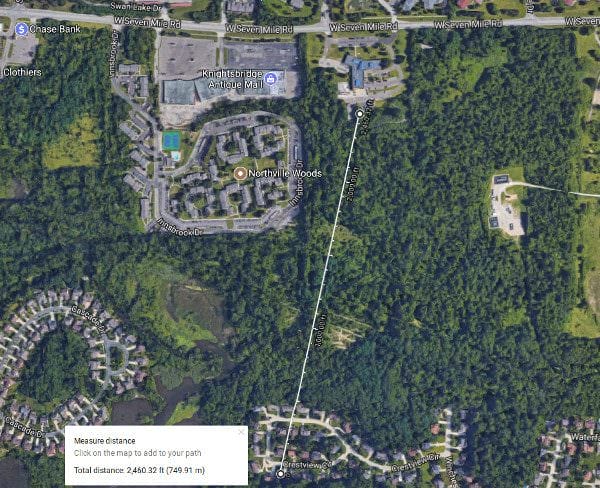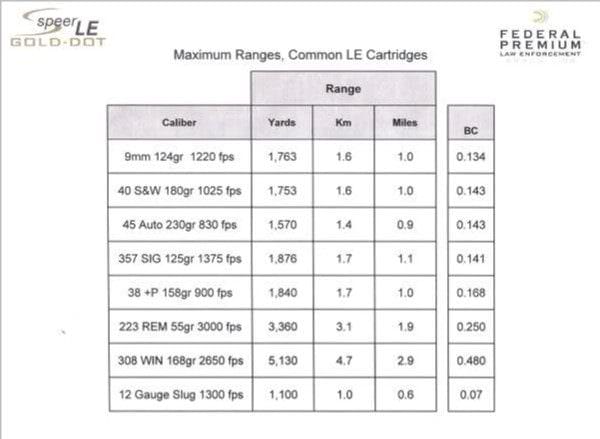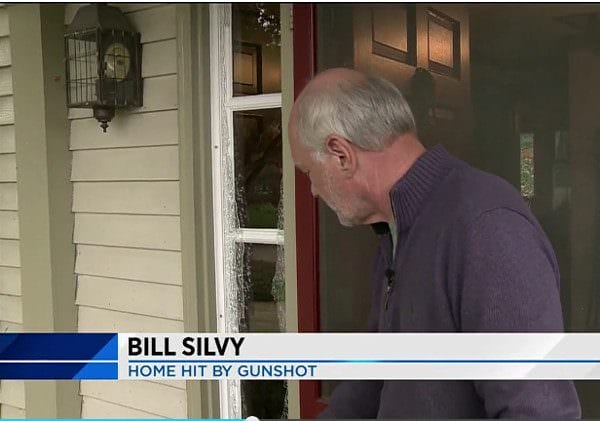By Dean Weingarten


Arizona -(Ammoland.com)– There is a stray bullet investigation ongoing in the south of Michigan, in Northville Township. A window was shattered on about the 10th or 11th of October, 2017. I am skeptical of these type of incidents. They are quite rare. The image of an Iraqi woman showing investigators two complete rifle cartridges, that supposedly hit her residence, is memorable.
This incident appears to be real, not a hoax like the famous Iraqi incident. The window was shattered. It was broken in a believable way. The bullet was found with the shattered glass. The bullet looks fresh and has rifling marks. From clickondetroit.com:
Last year, two homes were hit by stray bullets. The gun range was shut down and modifications were made to ensure the neighborhood’s safety.
Now, another home was hit by a bullet.
A resident on Crestview Circle came home to find his front door shattered and a bullet on the ground.
The Northville Township Police Department investigated and passed the recovered bullet on to MSP to see if it is one their rounds.
The distance from the Michigan State Police Laboratory and the broken window is 2,460 feet or 820 yards. The google maps image below shows the geometry. The direction of fire would have been nearly due South, as is shown in the image.

The distance is well within the maximum range of common pistol bullets. From the picture, I cannot tell if the projectile is a 9 mm or a .40 caliber. It might even be a .45 auto bullet. The Michigan State Police range is behind the Forensic laboratory. That puts it in a reasonable place to supply the bullet for the incident.

There was little energy left in the pistol bullet at that range. It would have been traveling down at a pretty steep angle. The velocity was probably in the 200-300 fps range. The combination of low velocity and a steep angel fits well with the damage done. Only the outside glass was broken. The glass and bullet fell outside. The inner, unbroken glass would direct the fragments to the outside, as there was not enough energy remaining to break the inside panes.

No one knows for certain if the bullet came from the Michigan Police Forensic Laboratory range. The distance is plausible. The bullet is plausible. The angles and damage are plausible. The rifling marks are clear. If there is a close match to a gun fired at the range that day, the circumstantial evidence will be complete.
Investigators at the MSP Forensics lab are baffled because the range has been specifically altered to make such an event impossible. But the possibility of human error is near infinite. What if a pistol was fired, at a high angle, by negligence, *before* being put in play at the range? A firearms instructor told me of exactly such an incident (that did not result in any damage), involving an officer, several years ago.
Many modern handguns use barrels that leave almost no distinguishing marks on the bullets fired. You can usually narrow the firearm down to a make and model or series of models. The manufacturing techniques have become so good, the barrels in some makes are extremely uniform. There are not sufficient differences in barrels to differentiate bullets fired from individual pistols.
There are other potential sources. In the Google maps image, you can see the wooded area between the house and the lab gets a lot of use. A person could have fired a pistol in that area, the bullet could have ricocheted off of a hard object, and ended up breaking the house window. The bullet nose shows significant deformation, more than seems likely from hitting a single pane of glass at such a low level of energy. The bullet most likely was deformed by an impact before the house window was hit. A bullet would normally be de-stabilized after hitting an object that deformed it that much. A de-stabilized bullet quickly loses energy as it travels through the atmosphere.
No one was hit. The danger was fairly small. If hit just wrong, an adult could have lost an eye or a couple of teeth. A young child might have been severely wounded, possibly even killed, if hit exactly wrong. Stray bullets are a danger but are rarely lethal. Pistol bullets, at nearly half a mile, are unlikely to break skin if the skin is protected by a layer of clothing. The velocity is about the same as such a projectile would receive from a high powered slingshot.
If the MSP lab was involved, it is a serious embarrassment, but a cheap lesson.
Pay to fix the window and tighten up the range and firing procedures.
©2017 by Dean Weingarten: Permission to share is granted when this notice is included.
About Dean Weingarten:
Dean Weingarten has been a peace officer, a military officer, was on the University of Wisconsin Pistol Team for four years, and was first certified to teach firearms safety in 1973. He taught the Arizona concealed carry course for fifteen years until the goal of constitutional carry was attained. He has degrees in meteorology and mining engineering, and recently retired from the Department of Defense after a 30 year career in Army Research, Development, Testing, and Evaluation.
